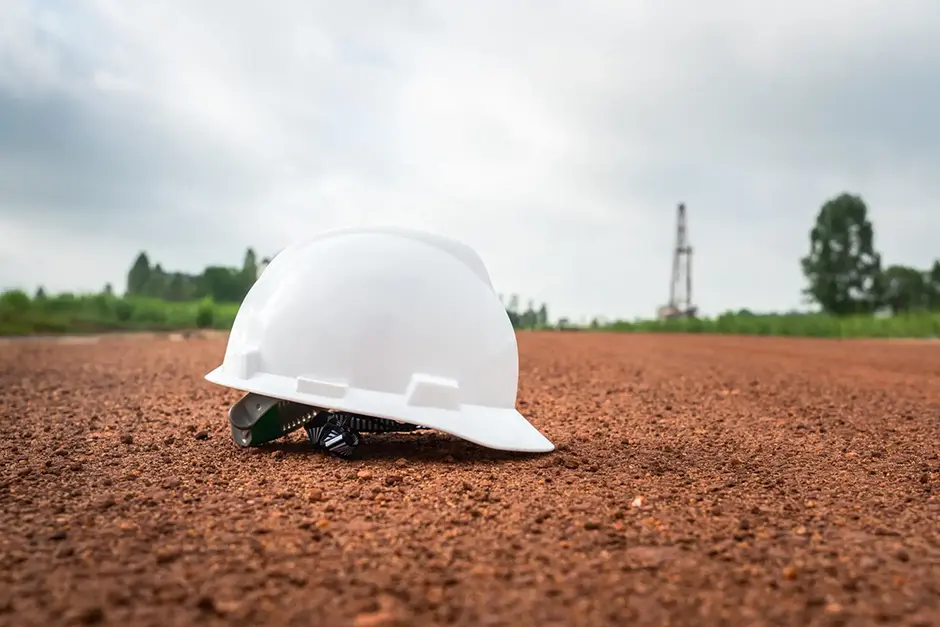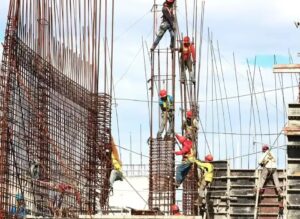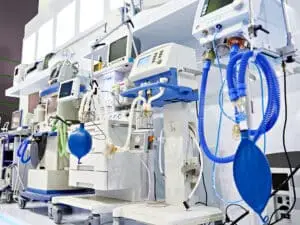Jobs in the oil and gas industry are especially dangerous. Oilfields and drilling platforms contain countless hazards that might cause minor injuries or serious harm. In fact, fatalities in the oil and gas industry are multiple times higher than in other sectors. Workers face potentially deadly risks every day, especially if they do not have the correct protective equipment for the job.
Employers who fail to provide it could be financially liable for an employee’s injuries or death. Workers should know their rights and how to enforce them to protect their health.
What Is Personal Protective Equipment?
Workers know the dangers they face on the job, but many do not know they are entitled to safety equipment that protects them from harm. Personal protective equipment (PPE) is worn to reduce the dangers of hazards in the workplace. It protects a worker’s body, hearing, breathing, and much more from the dangers on oil and gas extraction sites. Some of this equipment is simple, such as protective glasses. Other PPE is more complex and protects against very serious dangers.
PPE must be properly designed and constructed to work as intended. It should be kept clean and maintained properly. PPE should fit comfortably and safely cover exposed areas of the body.
Types of Personal Protective Equipment in the Oil and Gas Industry
PPE cannot stop every risk of harm, but the right type of PPE can make a big difference. Employers should provide necessary equipment based on a worker’s job, the hazards they face, and potential risks on the job site. The basic types of PPE oil and gas workers usually need include:
Eye and Face Protection
PPE often includes face shields and safety goggles that protect the face and eyes. Depending on an employee’s duties, eye protection may consist of simple glasses or more protective goggles. Welders require welders helmets that protect against sparks and UV light.
Face and eye PPE protects against hazards such as:
- Radiant energy risks from soldering, lasers, or gas welding
- Projectile objects
- Particulate matter in the air
- Chemical splashes
Safety glasses should comply with the ANSI Z87.1 eye protection standard and employees should check that their PPE is in good working order before using it.
Respiratory Protection
There are many breathing hazards on oil and gas sites that require PPE. This equipment helps protect against harmful fumes such as benzene, hydrogen sulfide, and diesel fumes. Many of these caustic gases can cause dizziness, lung damage, or even poisoning if proper PPE is unavailable.
Respiratory protection commonly includes:
- Surgical masks
- N95 masks or respirators
- Gas masks
- Full-face respirators
- Oxygen tanks and air containers
- Self-contained breathing apparatuses
Employers should ensure that breathing protection fits properly and employees are trained in using their respiratory PPE. Filters should be changed frequently, and respirators should be replaced with every use. Any damaged mask should be replaced and discarded to ensure proper safety for employees.
Head Protection
On industrial sites, like oilfields, falling objects, heavy machinery, and dangerous tools require employees to wear head protection. Hats and headgear may help prevent blunt force trauma from falling objects. A hard helmet may help prevent:
- Penetrating injuries
- Scalp lacerations
- Traumatic brain injuries
Employees should replace a hard hat after any kind of impact to ensure it is safe for future use.
Body Protection
Body PPE is meant to cover a person at and below the neck. It may cover a small portion of a person’s body, like a vest, or the entire surface, like a full-body suit. Body protection PPE prevents injuries from:
- Insect bites
- Lacerations
- Extreme temperatures and burns
- Chemical exposure
- Radiation exposure
Hand Protection
Hand protection is one of the most important but commonly overlooked PPE types. Safety gloves are critical to protecting employees’ health and the use of their hands. Gloves help prevent burns, severe cuts, fractures, and amputations.
Ensure gloves fit properly and are undamaged before use. Always replace hand PPE if it appears damaged or worn.
Foot Protection
Oil and gas industry workers are on their feet every day. They often perform heavy-duty tasks, carry heavy loads, walk on dangerous surfaces, or work near heavy machinery. Without proper foot protection, workers’ feet or toes are at severe risk of harm.
PPE often includes:
- Boots with slip-resistant soles and steel toes
- Puncture-proof shoes or boots
- Specialized socks
- Supportive insoles or shoe inserts
- Ankle or shin guards
- Knee pads
Hearing Protection
Drilling platforms and oilfield sites are incredibly loud places in which to work. Tools and machinery reach high decibels and can damage a person’s hearing over time. Some sounds are so loud that hearing damage or loss can occur in a single moment. Hearing PPE typically includes:
- Ear plugs with appropriate noise reduction
- Ear muffs
- Separation of employees from loud noise sources, such as in an isolated room
Fall Protection
The risk of a slip and fall is very high on oil and gas sites. Workers are exposed to slippery surfaces and high heights every day. PPE, such as safety harnesses and lanyards, may help prevent falls or significantly limit injuries in case of a fall. For example, safety harnesses on high ladders can limit falls to a few feet, rather than 100 feet onto a hard surface.
Company PPE Programs
The Occupational Safety and Health Administration (OSHA) states that if PPE is necessary, a PPE program should exist. The program should address:
- Hazards present on the job site
- Selection procedures for PPE
- Maintenance policies and procedures for employees
- Training for employees on how to use the safety equipment
- Ongoing monitoring to ensure effective use of the equipment
Oil and gas executives know these jobs are dangerous and PPE is necessary. Some companies choose to prioritize the bottom line over their workers’ health. They may cut corners, fail to provide PPE, or negligently manage its use. However, a properly implemented PPE program helps reduce risks to oil and gas workers.
PPE Requirements Under Federal Regulations
OSHA requires that oil and gas employers provide suitable protection based on the worker’s job duties or exposure to hazards. For example, the law requires employers to provide eye protection to prevent harm from sparks, flying objects, or damaging substances. Regulations may require head protection, gloves, or even full-body protective gear.
Companies that do not comply can face regulatory fines and stiff penalties. In these cases, OSHA and other agencies may get directly involved to enforce these rules and ensure companies provide PPE.
Have the Personal Protective Equipment You Need
Every oil and gas worker should know their rights to PPE. Employees should make sure they are properly outfitted before beginning any job to minimize their risks on the job site. If workers are injured on a job site where proper PPE was not provided, they may also be entitled to monetary damages with the help of a personal injury attorney.





